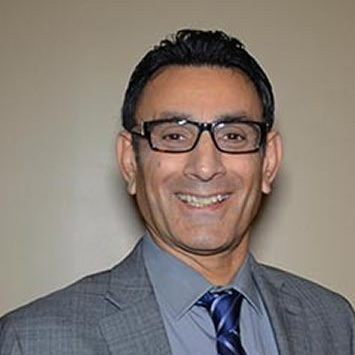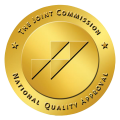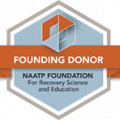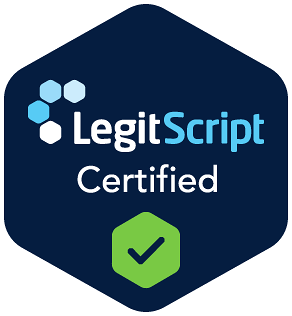Medical detox can help secure a healthier future by assisting a client in alleviating withdrawal symptoms and decreasing cravings. It helps to deal with the physical side of addiction so that the client can face its psychological aspects. Detox provides medical interventions to keep the client comfortable and safe while dealing with withdrawal symptoms.
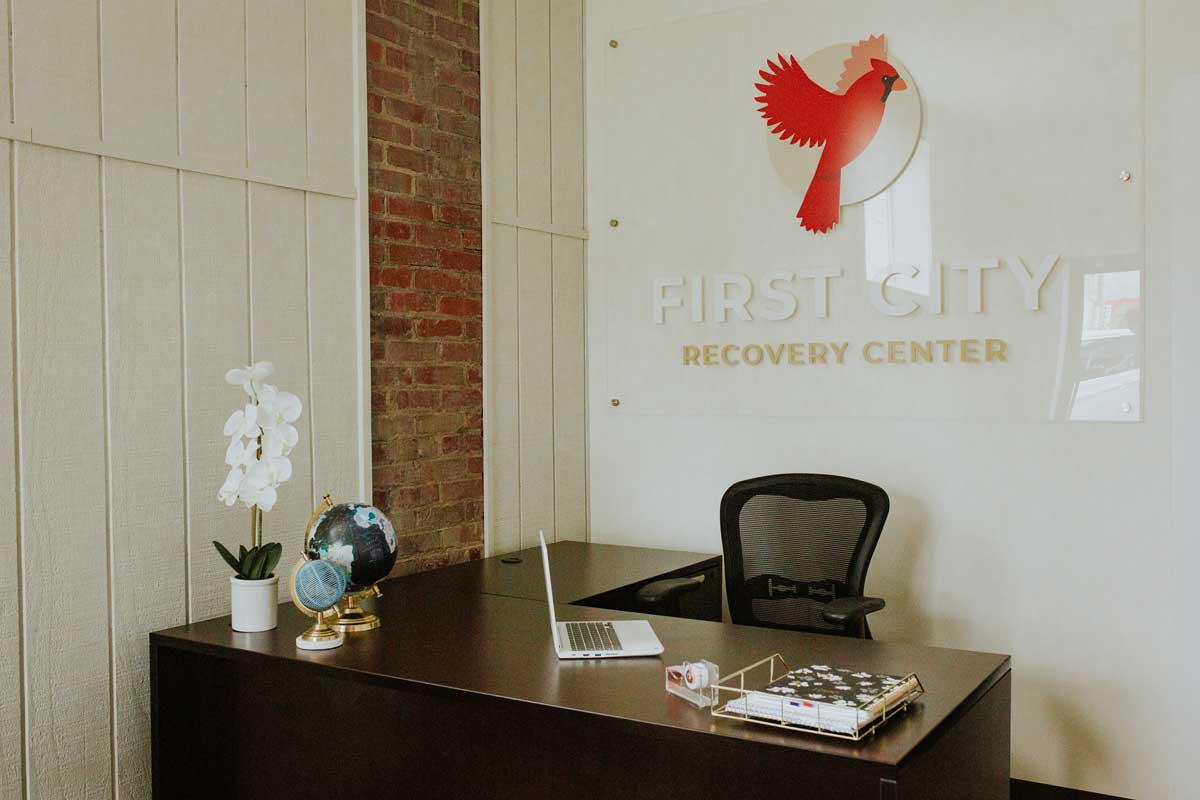
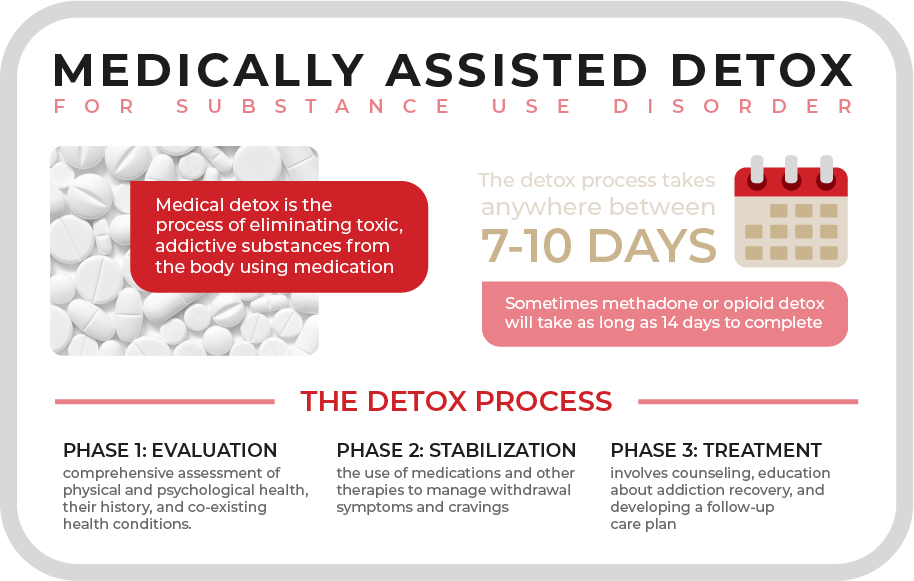
The Basics of Medical Detox
When a client quits using drugs or alcohol, the withdrawal symptoms can be severe. Common withdrawal symptoms may include:
- Depression
- Problems sleeping
- High blood pressure
- Mood swings
- Fever
- Restlessness and seizures
- Difficulty concentrating
- Anxiety
- Sweating
- Shakiness
- Hallucinations
- Nausea and vomiting
- Body discomfort
- How long the addiction lasted
- Family history with addiction
- Genetic makeup
- Underlying mental health conditions
- Type of substance the user is addicted to
- Severity of the addiction
- Method of abuse
- The amount of substance the user takes at a time

Addiction is a chronic condition that puts an individual at risk of becoming physically dependent on a substance. You can become physically dependent on a drug if you have been taking it in large amounts over an extended period. You can also become dependent if you require increasing amounts of a drug to get the usual effect or if you experience a diminished effect over time from using the same amount. Other causes of dependence on a drug include trying to quit without medical help or increased cravings with no access to the drug.
Detox is necessary for individuals with substance use disorder who are experiencing the effects of withdrawal because they are at risk of overdose. The more a person uses a drug, the higher their tolerance to it. This means they will require higher amounts to achieve a given effect.
The Process of Detoxification
The second phase is stabilization, which helps to protect you from any form of harm. Doctors use psychological therapy and medical intervention to alleviate withdrawal symptoms and prevent any complications.
The final step fosters you into treatment, which can help you recover and avoid a relapse. You become familiar with the treatment process. Detox on its own is not a treatment in itself; rather, it’s the first step toward treatment and recovery. Successfully completing a detox program increases your chances of completing treatment and becoming sober.
The entire process of detox takes about seven to 10 days. The duration may vary depending on the amount of substance used, severity of withdrawal symptoms, and your mental and physical health. Other individual factors include your genetic makeup, weight, body chemistry and metabolic rate.
Drugs and substances have different withdrawal timelines that affect the length of the detox process. Alcohol can take two to 48 hours, as withdrawal symptoms usually start early. Other symptoms like seizures and delirium may last for two to three days. Benzodiazepine withdrawal symptoms can take several weeks. Opioid withdrawal can vary from three to 14 days depending on the drug. Methadone withdrawal may take up to two weeks, while the period for heroin or oxycodone withdrawal may be as short as three days.
Types of Detox Programs
![]()
Alcohol
![]()
Meth
![]()
Opioids
![]()
Ambien
![]()
Fentanyl
![]()
Oxycodone
![]()
Heroin
![]()
Xanax
![]()
Tramadol
![]()
Suboxone
![]()
Benzodiazepine

Medications Used in Detox
Medication is often used in detox to reduce cravings and alleviate withdrawal symptoms. A licensed medical professional administers the medication. Here are some of the drugs used during detox.
Methadone has been in use since the 1950s to treat opioid withdrawal. It is a fully activated opioid that helps clients prevent opioid withdrawal symptoms. It carries the same risks as an opioid, and it has to be well-monitored. Treatment centers must be licensed by the federal government to treat opioid use disorder with methadone. Once the clients start recovering, they can begin to taper off of methadone.
Naltrexone acts as an opioid-blocking agent and can be used on both opioid and alcohol use disorders. It can help end opioid withdrawal after using opioids. Clients who receive naltrexone must abstain from using opioids for seven days.
Suboxone is approved for opioid treatment and helps in managing withdrawal symptoms. It contains buprenorphine, which partially activates the brain’s opioid receptors. It has a lower risk for addiction and overdose than methadone.
Vivitrol is an injectable form of naltrexone, and it’s used in the treatment of alcohol and opioid use disorders. Its effects can last longer than those of naltrexone, which is taken orally and daily. A single shot of Vivitrol can last over a month. To receive Vivitrol, clients must not take alcohol or use opioids for 7 to 10 days.
Sublocade is an injectable form of buprenorphine, and it’s still new in the market. It carries less risk of abuse and alleviates withdrawal symptoms associated with oral forms of buprenorphine like Suboxone. However, Sublocade is only given to clients who have received Suboxone for a minimum of seven days.
Side Effects of Detox
It is crucial that pregnant women quit drugs and alcohol, as the substances are harmful to them and their unborn fetuses. Going on detox without the help of a medical professional can cause stress to the fetus. Detox during pregnancy helps to prevent relapse and alleviate withdrawal symptoms that can harm the fetus.
The drug type determines the severity of the withdrawal symptoms. For example, withdrawal symptoms for cocaine are mostly psychological and include managing anxiety and cravings. On the other hand, withdrawal symptoms for alcohol are mostly physical.


Life After Detox
Trying to quit drugs all at once, or cold turkey, can be dangerous to an individual. For example, quitting alcohol abruptly can cause seizures, diarrhea, delirium or even death. Other effects include flu-like symptoms and increased cravings, which can trigger a relapse. It is advisable to get the help of a medical professional before quitting drugs abruptly.
Detoxing at home without professional help is risky and can even be fatal. The home environment may contain triggers that can lead to a relapse. Going through a detox program in a treatment facility or while supervised at home makes the process safer and more comfortable.
The Cost of Detox
When choosing a health plan, ask about the services covered and the criteria used when deciding which ones to pay for. The plan should cover health care in hospitals and outpatient services. You can also look for free rehab and detox programs near you.
Finding Help
First City Recovery Center is an alcohol rehab and addiction center in Kokomo, Indiana. We provide a holistic treatment approach and custom treatment programs. Some of our programs include motivational interviewing, cognitive behavioral therapy and family therapy.
Our team of professionals will help you as you continue your path to freedom from substance abuse. Call us today to get more information about starting your journey to recovery.


